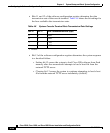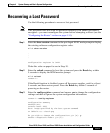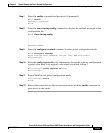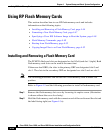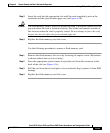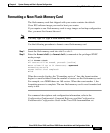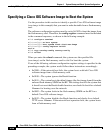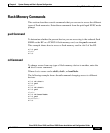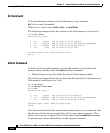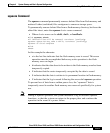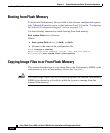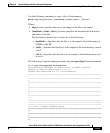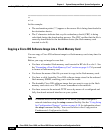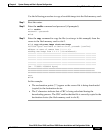
Chapter 4 System Startup and Basic System Configuration
Using RP Flash Memory Cards
4-48
Cisco 12010, Cisco 12410, and Cisco 12810 Router Installation and Configuration Guide
OL-11496-01
Specifying a Cisco IOS Software Image to Boot the System
Use the procedure in this section to identify a specific Cisco IOS software image
(new.image in this example) that you want to make bootable from a flash memory
card.
The software configuration register must be set to 0x2102 to boot the image from
the flash memory card. Therefore, the config-register command must be included
in the command sequence, as shown in the following example.
Milo# configure terminal
Milo(config)# no boot system
Milo(config)# boot system flash slot0:new.image
Milo(config)# config-register 0x2102
Ctrl-Z
Milo# copy running-config startup-config
Milo# reload
When you enter the reload command, the system uses the specified file
(new.image) on the flash memory card in slot 0 to boot the system.
If one of the following software configuration register settings is specified in the
preceding example, the system would follow those instructions accordingly:
• 0x2000—If the network boot fails, the system boots a default Cisco IOS
software image from a flash memory card.
• 0x0100—The system ignores the Break function.
• 0x0101—The system boots the default image (the first image found) from the
onboard flash memory SIMM on the RP. This setting also tells the system that
it should not reset the Break disable function, nor should it check for a default
filename for booting over the network.
• 0x0002—The system looks in the flash memory SIMM on the RP for a
default Cisco IOS software image.
• 0x0102—The system disables the Break function and checks for a default
TFTP server filename. If the network boot operation fails, the system boots
from a flash memory card.



